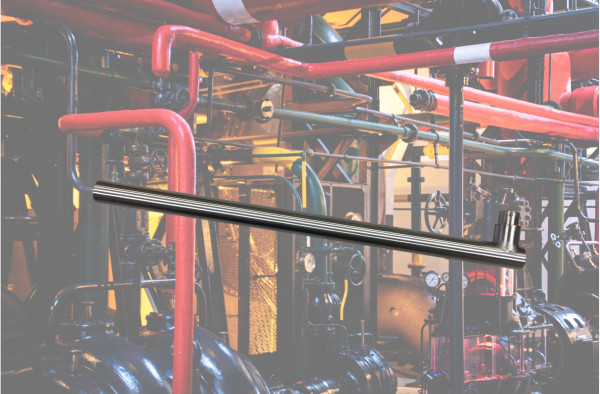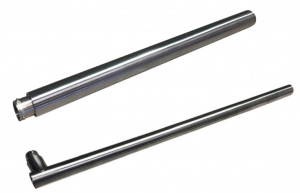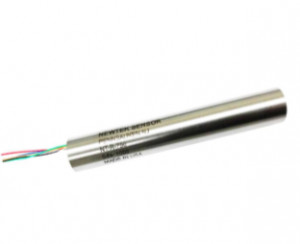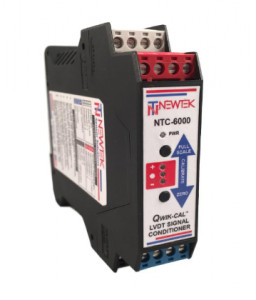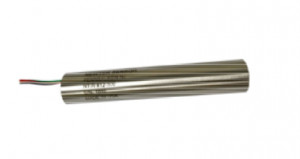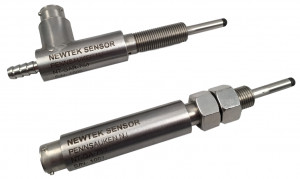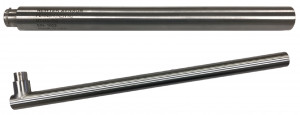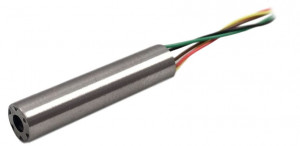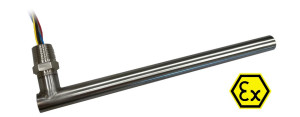LVDTs are selected when reliable, robust, and accurate position sensing is critical. Learn Why…
A Linear Variable Differential Transformer (LVDT) is common type of position sensor that converts the linear position or motion of a measured object to a proportional electrical output that can be read by operators and control systems. LVDTs are most frequently used where measuring ranges vary from ±0.250 mm to ±250 mm. LVDTs can be designed for temperatures from cryogenic ranges -150°C to as high as 537°C. The LVDT features frictionless operation, is very rugged in harsh environments, possesses excellent accuracy and repeatability, and has a near-infinite expected service life.
Working principle
The animation below shows the raw output of the LVDT as the measured object moves the LVDTs core. In most applications, the LVDT housing is mounted to a fixed position, while the measured object is mechanically linked to the movable LVDT core. As the core moves, the LVDT’s output changes as shown in the animation.

An LVDT has two components: a fixed housing containing the single primary winding with two secondary windings S1 and S2, and a movable core constructed of ferromagnetic material and mechanically linked to the measured object. There is no physical contact between the housing and the core. The single primary coil is centered in the housing and energized with an AC signal. Magnetically coupled by the core, a voltage is induced in each of two symmetrical secondary windings connected in a series-opposing circuit. The effective voltage and LVDT output is the difference between each secondary.

When the core moves away from the center of the LVDT, known as the null point, the signal from the primary will be coupled to one secondary more than the other. In Figure 1, as the core moves over S1, the voltage output of S1 increases. As the core moves over S2, the output of S2 increases. The value of (S1 – S2) and (S2 – S1) becomes a linear function of the core position as it moves toward S1 and S2, respectively.
AC Signal output can be turned to linear DC output
| The typical output of AC an LVDT is shown in Figure 2. As the core moves away from the null point in either direction within the LVDT range, the voltage outputs (S1 – S2) and (S2 – S1) increase proportionally. |  Figure 2 - The AC output increases as the core moves away from the null point in either direction. Figure 2 - The AC output increases as the core moves away from the null point in either direction. |
|---|---|
 Figure 3 - The phase of the LVDT output abruptly shifts 180° as the core travels through the null point. Figure 3 - The phase of the LVDT output abruptly shifts 180° as the core travels through the null point. |
Figure 3 shows the relationship of the core to the phase angle between the primary and secondary windings. As the core travels across the null point the phase of the output signal abruptly shifts by 180° as shown in Figure 3, allowing a user or signal conditioning electronics to determine which side of null the core is on. Being an inductive transformer, the LVDT requires an AC excitation voltage across the primary and produces an AC output across the secondaries. In modern LVDTs, excitation signal requirements are around 3 Vrms and frequencies ranging from 1kHz to 10 kHz. Support electronics and signal conditioners supply the excitation signal and measure output. Signal conditioners demodulate the low-amplitude AC output and produce DC voltage, current, or digital output that can be measured by most meters and control systems. |
| In addition to an external component, signal conditioners can also be built into the LVDT. Often referred to as DC LVDTs, the user can supply a DC input, and measure a DC output corresponding to the core position. DC LVDTs offer many of the benefits of LVDT technology with the convenience of supplying and reading a DC signal. |  Figure 4 - The output from an LVDT signal conditioner is a linear DC signal that can be accepted by most control systems and meters. Figure 4 - The output from an LVDT signal conditioner is a linear DC signal that can be accepted by most control systems and meters. |
PM Instrumentation offers a wide range of LVDT sensors for different purposes
- general purpose
- miniature
- high temperature
- ATEX
- radiation
- cryogenic
- rotary position
- spring loaded
- DC output
- Signal conditioning
More information here

